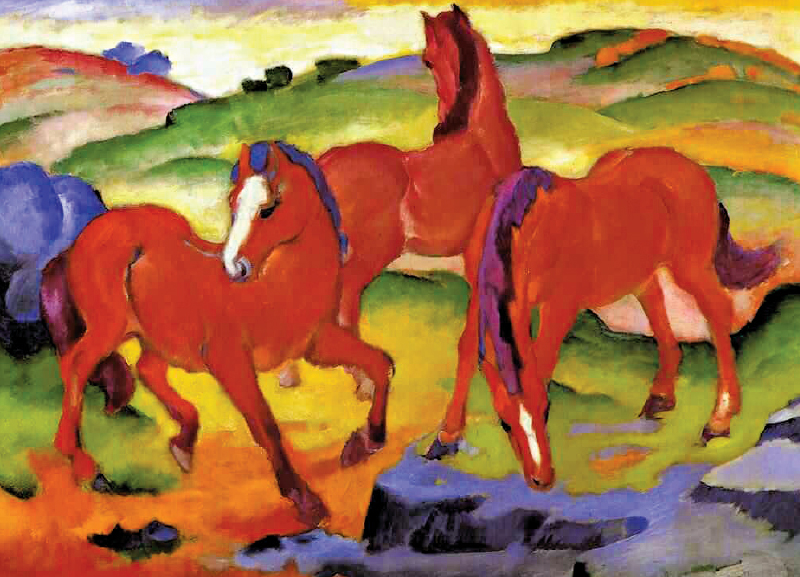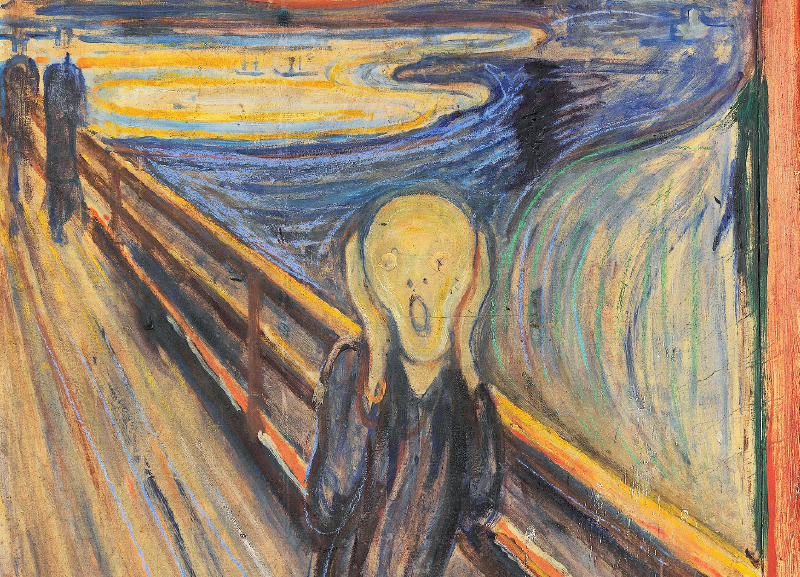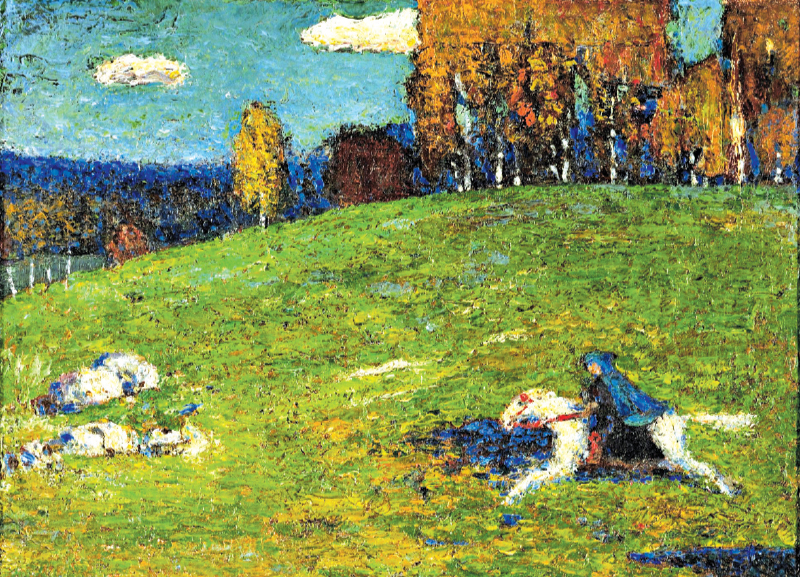

Expressionism emerged at the beginning of the 20th century in Germany, Europe. It was one of the most emotionally intense movements of the modernist period. While Impressionism aimed to portray the world outside through fleeting light and colour, Expressionism turned inwards, focussing instead on portraying inner turmoil and emotion.

Origin of Expressionism
The term ‘Expressionism’ was coined in 1910 by Czech art historian Antonin Matějček to describe works that did not reflect the outer world like Impressionism but instead expressed internal states. As World War I shook Europe, artists responded to its instability and destruction with raw, emotional depictions of fear, anger and disillusionment.
This was also a time of rapid scientific progress, which brought both a sense of advancement and widespread devastation. Expressionist artists reacted against the coldness of industrialisation and modern science, channelling their discomfort into intense, distorted images.
Expressionists used powerful lines, shocking colours and exaggerated forms to convey their emotional experiences. They rejected realism and instead used swirling and distorted brushstrokes to reflect the chaos they felt inside.
Essence of Expressionism
Expressionism wasn’t a unified style but a shared approach to showing inner emotion. Two key groups emerged:
Identifying Expressionism
Expressionist artwork can be recognised by:
FAMOUS CUBIST ARTISTS AND THEIR WORKS
Edvard Munch (1863-1944)

Franz Marc (1880-1916)

Emil Nolde (1867-1956)
Characteristics of Expressionism

Artists like Vincent van Gogh, Paul Gauguin and Edvard Munch laid the groundwork for Expressionism with their emotionally charged works. The movement spread across Europe, with major contributors including James Ensor (Belgium), Oskar Kokoschka (Austria) and German artists such as Max Beckmann, Ernst Ludwig Kirchner, August Macke and Franz Marc.
Create Edvard Munch’s ‘Scream’ in your own style.





